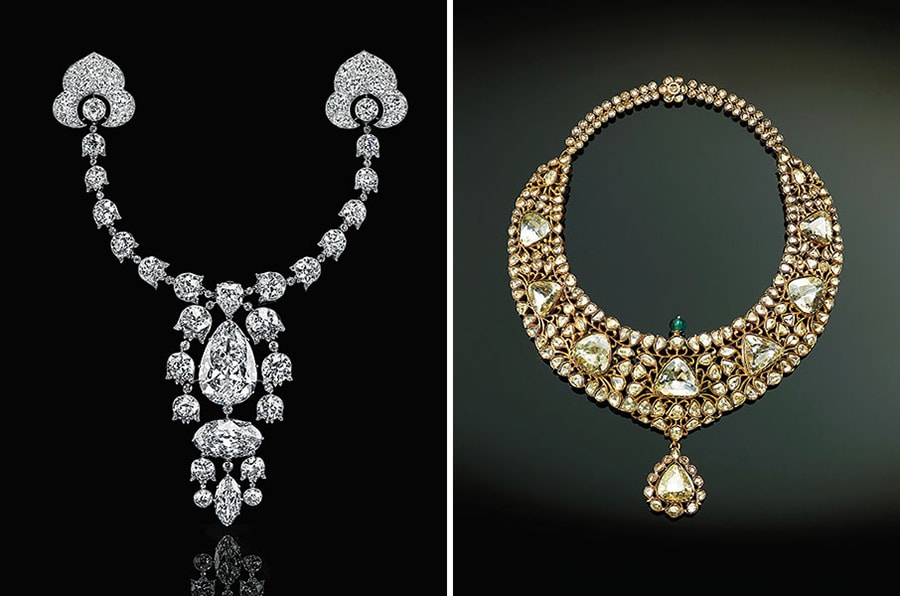
Christie's to auction Mughal collection, 'the best quality of Indian jewellery ever seen'
Rahul Kadakia, Christie's international head of jewellery and senior vice president, talks about the June sale of jewellery and artefacts from India, and why it took its time
 (Left) The Belle Époque Devant-de-corsage diamond brooch and (right) a diamond rivière necklace from the collection of the Nizam of Hyderabad
(Left) The Belle Époque Devant-de-corsage diamond brooch and (right) a diamond rivière necklace from the collection of the Nizam of HyderabadImage courtesy: Christie's
Four hundred storied items of jewellery and Mughal artefacts, including the likes of Shah Jahan’s dagger and Maharani Gayatri Devi’s pearl necklace, from the Al Thani Collection, owned by Qatar’s ruling family, will go under the hammer in New York on June 19. Organised by Christie’s, the Maharajas & Mughal Magnificence auction is among the biggest of its kind, given the rich history and rarity of items on sale. The auction included the Belle Époque Devant-de-corsage diamond brooch created by Cartier in 1912, and a diamond rivière necklace from the collection of the Nizam of Hyderabad, featuring almost 200 carats of Golconda diamonds.
 Rahul Kadakia, Christie’s international head of jewellery and senior vice president
Rahul Kadakia, Christie’s international head of jewellery and senior vice presidentRahul Kadakia, Christie’s international head of jewellery and senior vice president, spoke to Forbes India ahead of the event. Excerpts:
Q What is the significance of this auction?
This collection comprises 400 lots of the global Al Thani Collection, which in its entirety has 6,000 lots. For the world of collectors, this assortment of Indian jewels, Islamic objects, art deco-inspired jewels supplied by Indian royals in the 1920s and 1930s and jewellery designed by European houses like Cartier is as major an event as will ever be.
Q When did Christie’s begin auctioning Indian jewels?
We started sales at Christie’s for Indian jewels in 1997, in Mumbai, to celebrate India’s 50th year of Independence. Until then, we did not deal much with Indian jewellery because the market was not ready. The auction in 1997 had 160 rare items. It was a success and made about $6 million. We had similar sales every two years after that, but never found the quality items that the Mughal jewellery collection will have.
Q How has the Indian jewellery auction market evolved?
Compared to earlier auctions, the Mughal jewellery auction comprises high quality merchandise. In this context, the scenario between 1997 and 2003 was different. We had to combine different categories of art to even have an auction, but now we have 400 lots of the best quality Indian jewellery that one has ever seen, in one auction.




